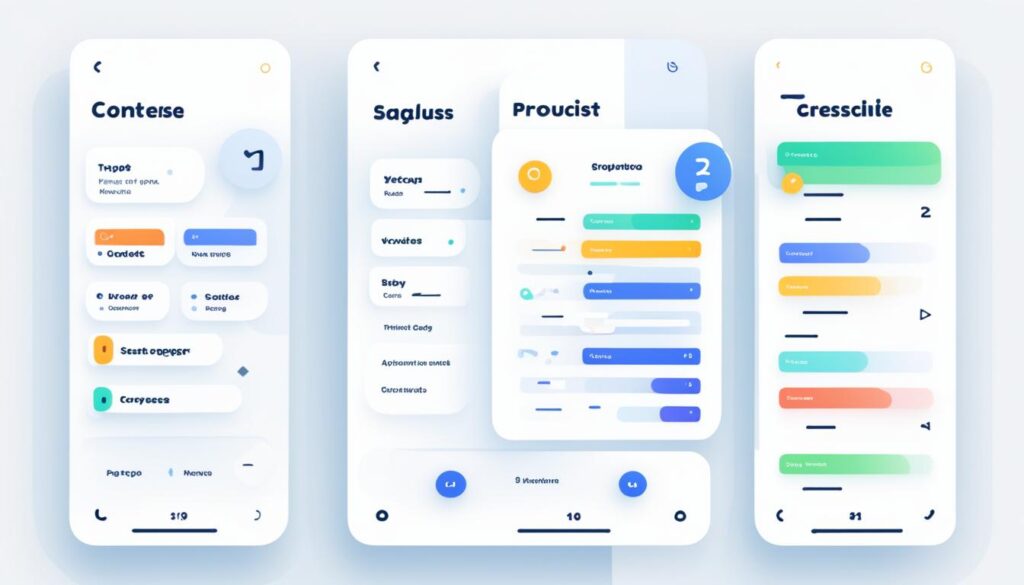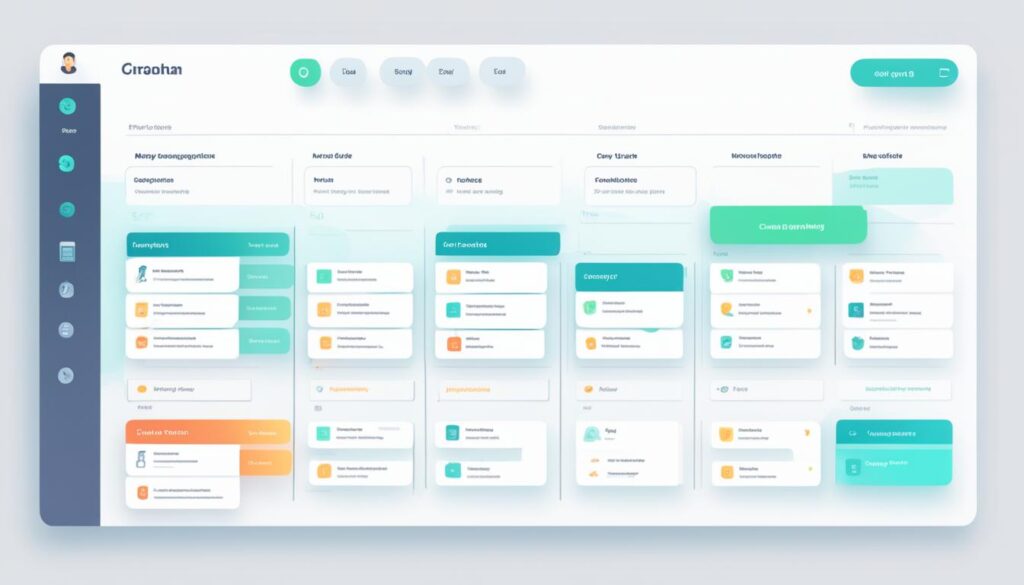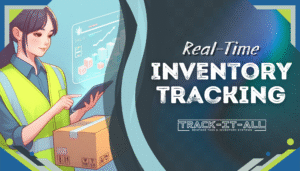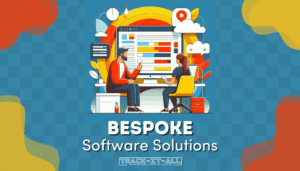Embarking on a project without a solid foundation for tracking tasks can lead to chaos and complications. To navigate the trajectory of projects successfully, a methodical task tracker set up is crucial. With the right task tracking system, project managers in South Africa and around the globe can stay abreast of each task’s progress, ensuring they’re in tune with their team’s velocity and the project’s overall health. In the digital age, the utilization of a comprehensive task manager software empowers teams to remain aligned with their objectives while promptly addressing unforeseen challenges.
Key Takeaways
- Establishing a task tracker is the backbone of effective project management.
- A robust task tracking system can preempt delays and budget issues.
- Selecting and implementing the right task manager software is pivotal for real-time progress tracking.
- An optimally set up task tracker lays down a pathway for insightful analytics and enhanced decision-making.
- Online task tracking tools are indispensable for maintaining updated data and stakeholder communication.
- Observing best practices in task tracker set up can significantly uplift team performance and project outcomes.
Understanding the Basics of Task Tracking
In today’s fast-paced work environment, having a clear overview of project tasks is essential. Task tracking is the backbone of effective project management, helping teams to stay informed and aligned with their objectives. Before we delve into the two key aspects of task tracking, let’s explore its fundamental importance.
What Is Task Tracking?
Task tracking is the systematic approach to monitoring the progress of tasks within a project to ensure timely completion. It involves employing a task management tool which acts as the central hub for all project information. This enables project managers and team members to stay updated on individual task statuses, impending deadlines, and overall project milestones.
Benefits of Implementing a Task Tracking System
The advantages of incorporating a task management tool into your workflow are substantial. A well-implemented project task tracking system offers clear visibility over the entire project, which in turn, bolsters productivity and accountability within the team. Below, we outline some of the key benefits:
- Improved Resource Allocation: Understand where and how resources are being used and adjust allocations as needed for optimal efficiency.
- Transparent Workflows: Bolster transparency throughout the project’s lifecycle, offering all stakeholders a clear view into each phase of the process.
- Enhanced Communication: Break down silos between different departments or team members with seamless information sharing.
- Deadline Management: Stay on track with deadlines by having a real-time overview of progress against the planned timeline.
To visualize the tangible impact of these benefits, the following table shows a comparison between projects managed with and without a project task tracking system.
| Criteria | With Task Management Tool | Without Task Management Tool |
|---|---|---|
| Visibility of Progress | High – All tasks are visible and status updates are instantaneous. | Low – Task progress is often unknown until manual updates are provided. |
| Resource Allocation | Efficient – Resources are allocated based on real-time data. | Inefficient – Allocation is often based on outdated or speculative information. |
| Stakeholder Satisfaction | Increased – Timely updates and visible progress lead to higher trust and satisfaction. | Decreased – Lack of visibility can lead to uncertainty and dissatisfaction. |
| Risk Management | Proactive – Potential issues are identified early through tracking, allowing for quick resolution. | Reactive – Issues are often only acknowledged after they have caused significant disruption. |
Embracing efficient task management tools and project task tracking practices empowers teams to deliver successful projects by providing control over detailed aspects of task progression. As tasks are completed, new insights form, shaping the future of project management towards increased precision and productivity.
How do I create a task tracker?
Setting up a task tracker is a fundamental step towards project efficiency and accountability. It encompasses several important stages, from clarifying the specific aims of tracking to the careful selection of a task management tool, which will empower you to stay on top of every project’s pulse.
Define Your Tracking Goals
Determining your objectives is critical when establishing a task tracking app. This step ensures that the app aligns with overarching project outcomes, enabling precise monitoring and evaluation of task progression. Whether it’s keeping an eye on deadlines, managing resources, or prioritizing tasks, outlining these goals will dictate how your tracking system operates.
Choose the Right Task Management Tool
The selection of a task list organizer is not to be underestimated. The right tool should dovetail with your project’s size, complexity, and team dynamics. Versatile features like collaborative workspaces, customizable lists, and reporting capabilities will serve to streamline and bolster your project’s productivity.
Setting Up Your Task Tracking Template or Software
Once your goals are set and tool chosen, the next course of action is configuring your project management tracker. This involves customizing templates or software settings to cater to your distinct project requirements. Effective setup will ensure seamless task categorization, time tracking, and resource allocation.
| Feature | Benefit | Consideration |
|---|---|---|
| Real-Time Updates | Ensures current information is always at hand | Network connectivity and user accessibility |
| Task Prioritization | Highlights urgent tasks to improve focus and resource distribution | Methods for categorizing and visualizing priority levels |
| Collaborative Features | Facilitates teamwork and stakeholder engagement | Integration with existing communication platforms |
| Deadline Tracking | Keeps project on schedule, avoiding delays | User-friendly interface to input and monitor deadlines |
In the quest to enhance your tracking efficiency, remember that a meticulously designed task tracking app is a cornerstone of successful project delivery. Embrace the power of a well-organized task list organizer, and capitalize on a robust project management tracker to transit from mere planning to exceptional project execution.
Essentials of an Effective Task Tracking App
Keeping pace with a dynamic work environment necessitates the adoption of a project management tracker and task manager software with feature sets designed for versatility and efficiency. The ultimate objective is to transition from simple task cataloging to a comprehensive platform that enriches project orchestration and team connectivity.

For a task tracking app to be genuinely functional, it should be imbued with powerful project management capabilities that go well beyond the basics:
- Real-time project dashboards for at-a-glance updates
- Resource allocation and management breakthroughs
- Integration features that mesh well with essential apps like Google Drive and Calendar
- Support for multiple project views, such as Gantt charts and kanban boards that facilitate agile adjustments and visualization
- Automated reminders for tasks, complemented by due date notifications
- Customizable tagging systems to highlight task significance and priorities
A versatile task manager software enables not just tracking but also strategizing, planning, and executing projects with a higher degree of precision. Enhanced by robust collaboration tools, team members find themselves well-equipped to engage and progress in a unified direction. The table below delineates the non-negotiable features that form the backbone of a sophisticated project management tracker.
| Feature | Description | Benefit |
|---|---|---|
| Interactive Dashboards | Dashboard that displays real-time data on project health and progression. | Enables swift decision-making and status assessments. |
| Multi-View Support | Variable viewing options like list view, Gantt charts, and kanban boards. | Adaptable to different project management styles and preferences. |
| Task Automation | Features such as recurring tasks and deadline reminders are automated. | Boosts productivity by minimizing manual entry and oversight. |
| Integration Capability | Compatibility with other software tools and platforms. | Streamlines workflow across various applications and services. |
| Resource Management | Tools to monitor and allocate team time and project resources. | Ensures optimal resource utilization and prevents bottlenecks. |
| Custom Tagging | User-defined labels to mark task importance and category. | Facilitates easy sorting and prioritization of tasks. |
By integrating these core functionalities, a project management tracker not only becomes an indispensable ally in the realm of task management but also elevates the overall productivity and coherence of a project team. Thus, selecting a task manager software imbued with these qualities is critical to the success of modern project management strategies.
Building Your Task List Organizer
Efficiently managing daily tasks is crucial to productivity and success in any project. A well-structured task list organizer is not just a to-do list, it’s a power tool that enhances your task management experience. With the right task tracking system, you can better organize, prioritize, and execute your tasks, ensuring nothing falls through the cracks.
Creating Actionable Task List Elements
To turbocharge your personal and professional efficiency, start by creating actionable elements within your task list. These should be clear, concise, and actionable items that describe the tasks at hand, beginning with an active verb to prompt immediate action. For instance, rather than just noting down “report,” specify “compile monthly sales report,” giving clear direction to the task.
Organizing Tasks for Maximum Efficiency
The secret to capably handling your workload lies in the organization of your tasks. An efficient task management tool allows you to categorize and prioritize your tasks based on various criteria such as urgency, project phase, or involved parties. This segmentation ensures that you’re not just busy, but productively busy, making tangible progress towards your goals.
In pursuit of establishing a high-impact task tracking system, let’s explore a practical example of how one might organize tasks to stay ahead:
| Task Category | Description | Priority Level |
|---|---|---|
| Client Follow-ups | Communications that are key to client relationship management | High |
| Administrative | Routine daily operations, such as email sorting and appointment setting | Medium |
| Project Development | Core activities that drive project milestones forward | High |
| Professional Development | Activities aimed at enhancing skills or knowledge | Low |
| Personal | Non-work related tasks, important for work-life balance | Medium |
The above table serves as a blueprint for organizing your tasks in your chosen task management tool, lending to an effective task tracking system that can handle the demands of modern work life.

In conclusion, leveraging a task management tool helps you build a task list organizer that not just tracks, but propels you toward your objectives. It’s about transforming a simple list into a strategic weapon in the battle for productivity and success.
Project Tracking with Gantt Charts and Kanban Boards
The landscape of project task tracking has evolved to embrace visualization tools that enhance clarity and coordination within project management. Among these tools, Gantt charts and Kanban boards stand out for their distinctive ability to represent complex information in an accessible and interactive format. Below we explore how each tool contributes to a sophisticated project management tracker.
Utilizing Gantt Charts for Comprehensive Overviews
Gantt charts have become essential for providing a bird’s-eye view of a project’s timeline and individual task durations. For managers and teams who aim to maintain a strict adherence to deadlines, these charts offer a visual timeline that integrates start and end dates, crossing into each task’s specific duration. Gauging whether a project is on track has never been simpler with such a comprehensive display.
Leveraging Kanban for Workflow Visualization
Kanban boards, contrastingly, specialize in workflow visualization. They organize tasks into columns that represent different stages of the work process, providing immediate insights into task progress and resource distribution. This simplicity allows for real-time updates—a critical feature in dynamic project environments that demand agility and rapid response to change. The clear, visual representation of Kanban boards streamlines the tracking of progress and promotes efficient, lean workflows.
| Feature | Gantt Chart | Kanban Board |
|---|---|---|
| Focus | Project Timeline | Workflow Status |
| Strength | Milestone Tracking | Real-Time Updates |
| Best For | Long-Term Scheduling | Agile Processes |
| Visualization | Horizontal Bars | Vertical Columns |
| Collaboration | Top-Down Planning | Team-Based Adjustments |
Both Gantt charts and Kanban boards have their unique advantages in project task tracking, and when used collectively within a project management tracker, they can significantly amplify a team’s ability to monitor, adjust, and steer projects towards successful completion. Embracing these tools fosters a culture of transparency and collaboration, hallmarks of modern, efficient project management.
Integrating Task Tracking into Project Management
For a project to succeed, implementing a task tracking system within its framework is more than just a convenience; it’s paramount for pinpointing progress and assigning resources efficiently. Task tracking, when seamlessly integrated into the overall project management protocol, revolutionizes the approach to meeting deadlines and delivering exceptional outcomes. By adopting a dynamic task tracking app, team leaders can offer a transparent model that arguably transforms the foundational principles of project execution.
The cornerstone of this integration is the ability to merge the planning and execution stages flawlessly, allowing for meticulous supervision through each project phase. Below, we’ve delineated several key components that are instrumental in fortifying the relationship between project management and task tracking:
- Unified Dashboard: Provides a comprehensive snapshot of ongoing projects, pending tasks, and achieved milestones, all within a single interface.
- Milestone Identification: Sets clear, measurable goals throughout the project’s lifecycle, which can be monitored through the task tracking system.
- Resource Allocation Module: Equips managers with the tools to efficiently distribute workloads and manage personnel based on real-time data.
- Progress Reporting: A feature that automates the generation of detailed reports to keep stakeholders informed on project advancement.
Using a task tracking system mutually reinforces the accuracy of project timelines and budget estimations. This level of augmentation proves pivotal, especially when managing complex initiatives that require a strategic blend of versatility and control. The broader impact of integrating a robust task tracking app into project management is clear—productivity soars, bottlenecks are swiftly identified and resolved, and teams are better positioned to accomplish their assigned tasks with a heightened sense of clarity and purpose.
In conclusion, as we delve deeper into the era of digital transformation, the requisites of project management continually evolve. A state-of-the-art task tracking app is not only an asset but a necessity for those looking to excel in this fast-paced domain. Through meticulous tracking and data harmonization, project managers can confidently navigate the intricacies of their projects, ensuring a steady pace towards success.
Conclusion
In closing, the journey towards peak project management efficiency is made significantly smoother by the strategic implementation of a comprehensive task tracking system. As we’ve seen, each phase of the task tracker creation process plays a pivotal role, from laying down precise tracking objectives to the adoption of sophisticated task tracking app features. Optimally utilizing these systems not only centralizes project insights but also improves accountability and resource management across the board.
Moreover, the incorporation of visual project management tools like Gantt charts into your project task tracking routine is more than just a feature; it’s a transformative step towards heightened transparency and communication. These visual tools offer a dynamic perspective of project timelines and enable teams to navigate through complex project landscapes with enhanced agility and foresight.
To sum up, nailing the art of task tracking is indispensable for modern project management success. With the right tools and practices, teams can precisely scope their project’s trajectory, foster collaboration, and drive productivity to new heights. Embrace these established methods and watch your project delivery process evolve into a well-oiled, goal-achieving machine.







